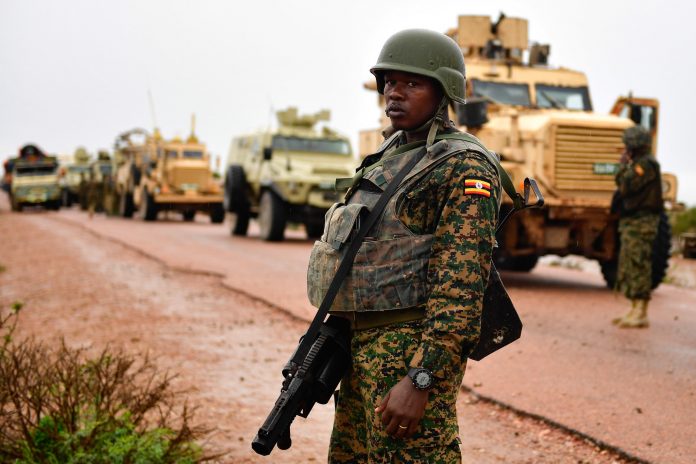For the past 15 years, the African Union Mission in Somalia (AMISOM) has aided Somalia’s government in its fight against al-Shabaab. The operation was set to end in December 2021, and an agreement has finally been reached on what appears to be nothing more than a name change and an extension of the current mandate.
The African Union (AU), the United Nations (UN), and the Somali government agreed that AMISOM would be replaced by the African Union Transition Mission in Somalia on April 1st (ATMIS). The new mission will run until the end of 2024, after which it will be handed over to the Somali Security Forces. ATMIS’ capacity of around 18,000 troops, 1,000 police officers, and 70 civilians, as well as much of its mandate, is similar to that of its predecessor.
So, has anything changed that could aid Somalia’s stabilization?
AMISOM’s mission began in March 2007 with the goal of degrading al-Shabaab and strengthening the Somali Security Forces, military, and police so that the mission could be phased out in 2021. However, the exit did not take place because the security threats that prompted the deployment in the first place remain.
Last year, the AU and UN conducted independent assessments to determine AMISOM’s future, and various options were proposed. A new mission’s mandate, composition, size, strategic and specific objectives and tasks of the military, civilian, and police components all needed to be agreed upon.
ATMIS is to focus on implementing the Somalia Transition Plan, according to Somalia’s government. AMISOM’s security responsibilities were transferred to the country’s security forces under the plan, which was developed in 2018. It was recently revised, and the next three years will be spent on it. This approach was endorsed by the African Union and the United Nations. ATMIS’ stabilization and state-building objectives, according to Bankole Adeoye, AU Commissioner for Political Affairs, Peace and Security, will be fully aligned with the Somalia Transition Plan.
The African Union’s Peace and Security Council gave the new mission a mandate that included degrading al-Shabaab and other terrorist groups, providing security, developing the capacity of security forces, justice, and local authorities, and supporting peace and reconciliation. At its meeting on March 30, the UN Security Council is expected to approve the mandate and authorize ATMIS.
However, AMISOM’s mandate was also aligned with the Somalia Transition Plan, so ATMIS does not bring anything new to the table.
ATMIS, according to Omar S Mahmood, Senior Analyst at the International Crisis Group, will have only a few minor differences. ‘Perhaps the most significant change is that the concept of “transition” is now more deeply embedded in the rationale of the new mission, which has a four-phased timeline for working with the Somali government to implement the Somalia Transition Plan.
“A few smaller adjustments, such as re-alignment of AMISOM’s sector structure and increased command-and-control authority under the mission’s force commander, are also expected, but these are expected to be minor.”
ATMIS will differ from AMISOM in terms of operational changes by developing more mobile and agile forces in each mission sector. The primary mission of these quick-response forces with enabling capabilities will be to degrade al-Shabaab and other extremist militant groups quickly.
After his term expired in February 2021, President Mohamed Abdullahi Mohamed, who has been in power since 2017, is still in charge. The task of reforming the election process was given to Prime Minister Mohamed Hussein Roble, but progress has been slow. The country’s future is uncertain, with political impasses occasionally erupting into armed clashes.
Another major challenge is al-increasing Shabaab’s attacks. In recent months, numerous assaults have been reported, with recent strikes in Mogadishu and Beledweyne resulting in over 53 deaths. Despite AMISOM and the Somali Security Forces’ efforts, the group continues to control large swaths of southern and central Somalia, and attacks are on the rise.
Al-financial Shabaab’s and military capabilities are also expanding. In 2021, the Hiraal Institute, a Mogadishu-based research organization, reported generating about US$180 million in revenue and spending US$24 million on weapons.
ATMIS will have to deal with the same financial difficulties as AMISOM. The United Nations provided logistical support for the mission, with the European Union (EU) funding stipends for military and police personnel. However, the EU has reduced its support in recent years, and its plans for ATMIS are unclear. ‘The EU is ready to contribute and ensure predictable funding as long as the configuration plan is realistic, pragmatic, and focused,’ said Tiina Intelmann, head of the EU delegation to Somalia.
Because Somalia’s social and security problems are centered on the political impasse, resolving it should be a top priority. ATMIS’ mandate and force reconfiguration should include robust political engagement to support reconciliation among the country’s divided political groups if it is to differentiate itself from AMISOM. Otherwise, the exercise merely renames the mission, which will provide little assistance to the country.

